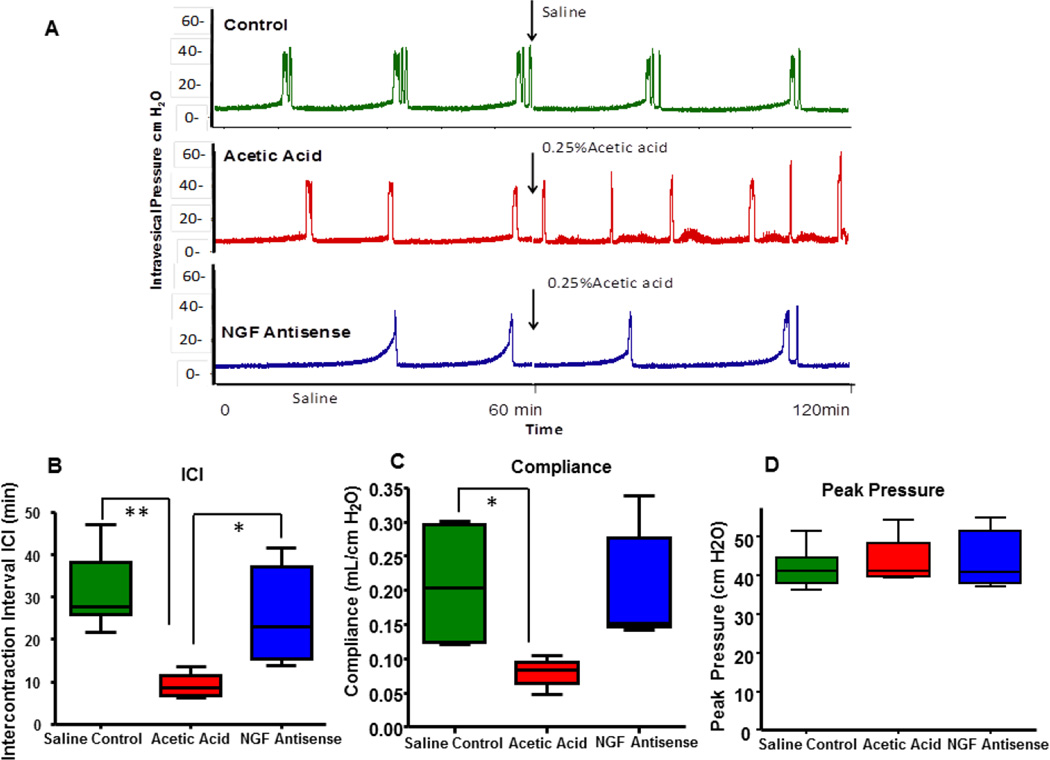Fig. 1.
Representative tracings from cystometry under urethane anesthesia (1.0g/kg s.c.) from three groups, where saline control group represented by green tracing was not exposed to 0.25% acetic acidic. Groups represented by red and blue tracing were exposed to 0.25% acetic acid following the saline cystometry at baseline. Bladder overactivity in group pretreated with saline (red tracing) was clearly evident following the time point for infusion of acetic acid marked by arrow. Rat group pretreated with NGF antisense (blue tracing) was able to block the acetic acid induced overactivity, which is driven by overexpression of NGF and inflammatory mediators (Panel A). Different CMG parameters such as lower ICI and poor compliance were observed in rats exposed to acetic acid while NGF antisense was able to reverse these parameters (Panel B–D). We didn`t observe any change in the peak pressure amplitude in all these groups (Panel E) One way ANOVA followed by Tukey’s test #p<0.01; *p<0.05.

